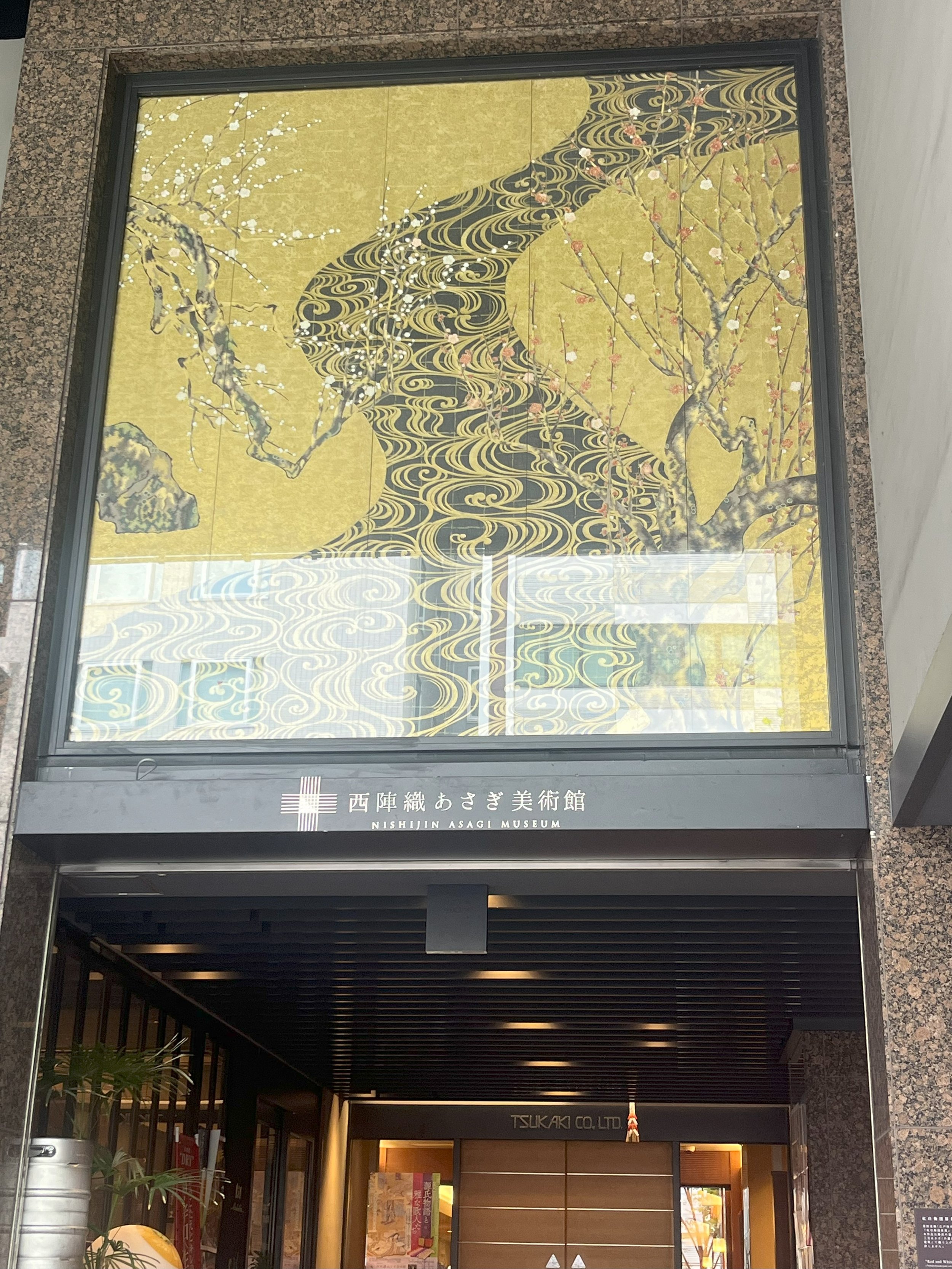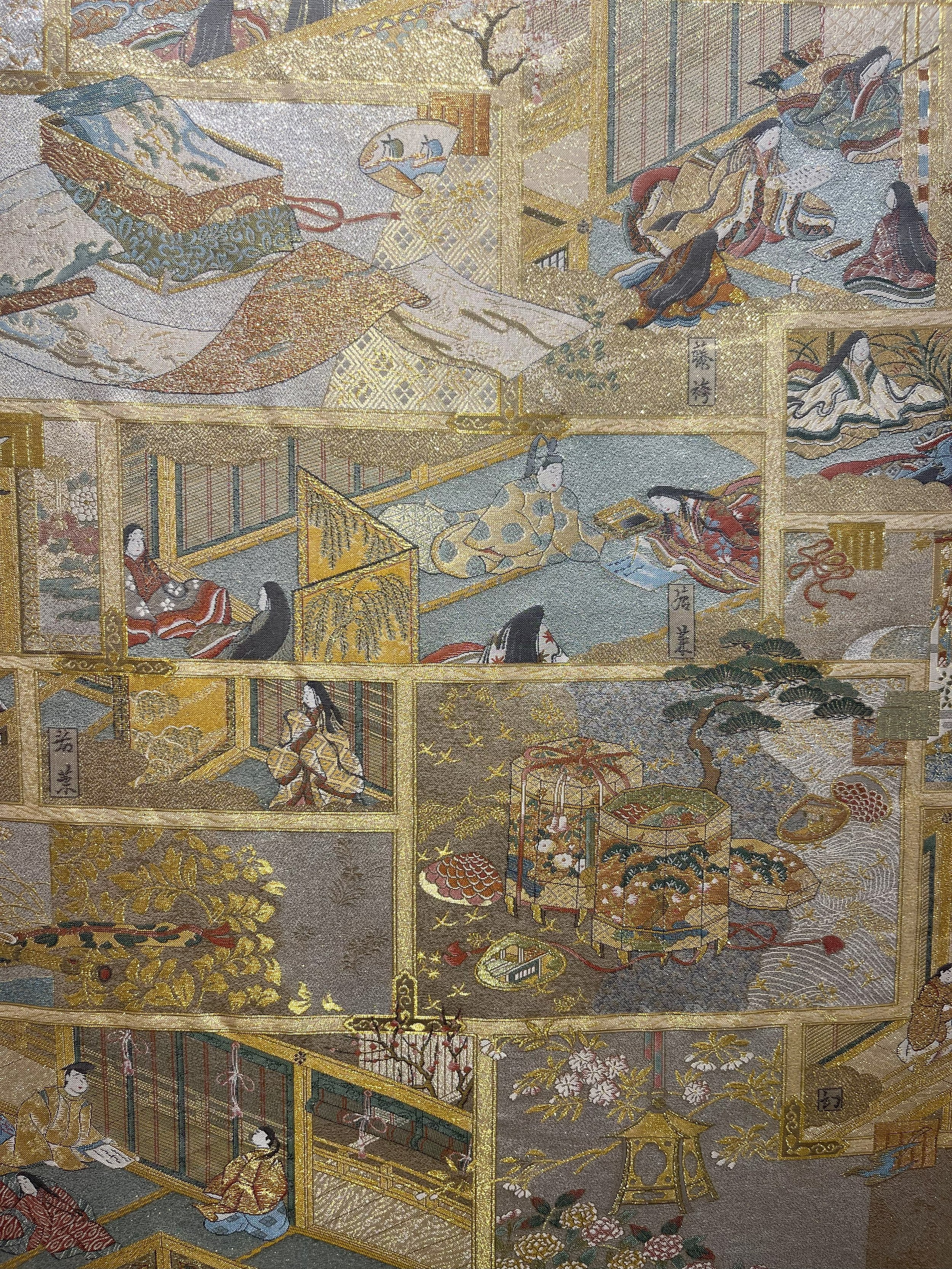Kyoto: Nishijin Asagi Museum
The entrance of the Nishijin Asagi Museum! Features imagery of one of the beautiful woven works which also greets you after you enter the space!
The Nishijin Asagi Museum was one of many of the larger art museums we visited in Kyoto, this one focusing specifically on Japan’s oldest traditional industry, Nishijin textiles.
This museum aims to take guests step-by-step through all the processes and materials required to make these beautifully woven Japanese textile works, from showcasing the materials required in their raw forms, as well as what the patterns look like prior to any textile work taking place. I was personally amazed by how intricate and precise these designs were, which I then learned that the Nishijin textile industry thrives on skill and perfectionism, that no mistakes can be made during the production process.
Nishijin textile works presented as long vertical scrolls on the wall; many of them use repetition in their large-scale designs.
Another distinctive feature that was pointed out that characterises many of the textile works was the precise use of metallic threads, which are woven from opposite sides to achieve a gradient effect. It was explained that the right side often used a golden thread, whilst the left would use silver, creating an subtle illusion of seasons when looking at the works. Personally, watching the thread change from gold to silver appeared to look like summer gradually changing to winter, as the tones would gradually go from warm to cool. I thought this was a beautiful way to present many of these floral designs and landscapes, allowing the use of repetition to appear less flat and more visually interesting.
One of the textile works I found to be incredibly satisfying: titled Murasaki shikibu.
My favourite part of the museum would have to be the dimly lit section, where the textile works would glow in the dark. These works specifically used Japan’s traditional Nishijin textile processes to recreate some of the most well-known and recognisable artworks from artists like Vincent van Gogh and Pierre-Auguste Renoir. The thing I enjoyed the most about these glow in the dark works was how the lighting conditions would gradually shift and change, making the colours in the works appear different. I found this to be a unique and unexpected addition to the textile works, as I truly did not expect textile works to possess glow in the dark or colour shifting capabilities!
Honestly, I really enjoyed this exhibition; unlike any sort of exhibition I have seen back at home! I found it incredibly easy to follow through and much more educational than the other galleries and museums I have visited; mainly due to its user-friendly and interactive technologies which are easily accessible. Another very important aspect to mention was how lovely and gracious the staff were when we visited; they seemed very interested to learn a bit about where we were from and how we came to know about this museum! Whilst textiles are not necessarily my focus nor interest in my art practice, it was absolutely lovely to learn more about different Japanese art practices and industries, especially one other than wood carving as I have learnt from the Netsuke Museum! I found this visit to be really useful in terms of thinking of potential design ideas for my woodblock print in Washi no Sato, as there was a very large array of designs ranging from florals, animals and landscapes.
The only thing I would’ve loved to see more in this space is how the fabric can be used to create fashion items such as Kimonos and costumes, as it seemed all of the textile works were hung in a scroll like format, and not applied to practical use.




